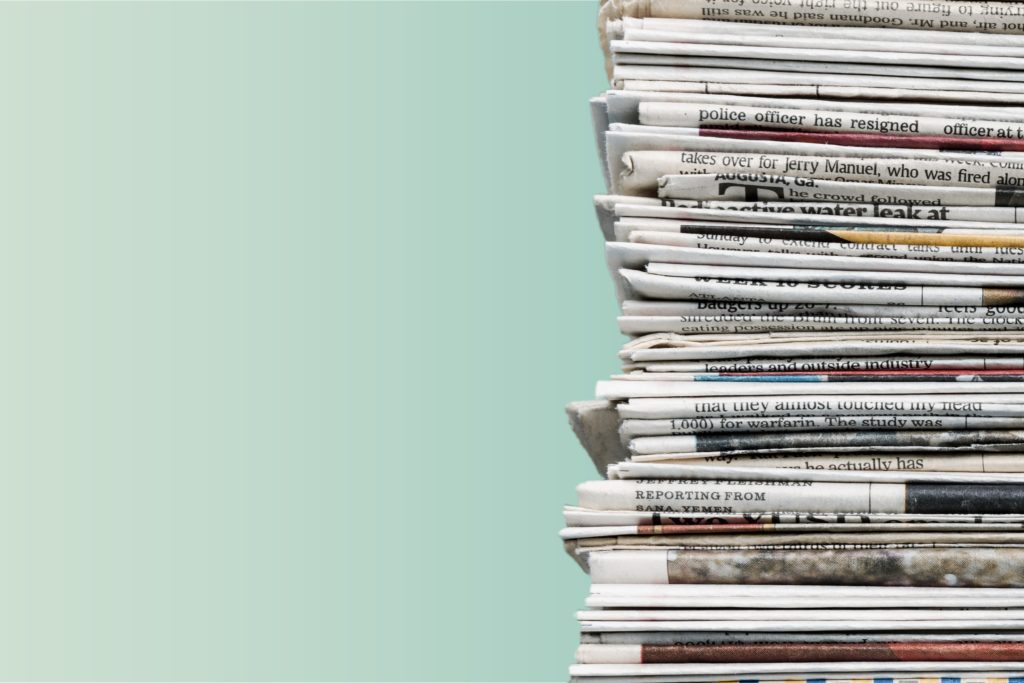
Parental Note: This experiment is geared towards ages 8 and up.
Additional Note: It will take roughly one week to collect enough paper products to complete this project (e.g. newspapers, wrapping paper, colored paper, etc). The project will take one hour to set up and complete. The final recycled paper sheets will take a full day to dry completely. Adult assistance is needed to use a blender or mixer to make the paper pulp.
Experiment Overview:
According to the United States Environmental Protection Agency (EPA), the United States uses about 70 million tons of paper and paperboard every year. Usually, paper is made from trees. Trees absorb carbon dioxide and when they are cut down to make paper, more carbon dioxide is released back into the atmosphere than absorbed. By reusing paper instead of making new paper each time, trees are preserved and more carbon dioxide can be stored in those trees long-term.
Recycling is the process of taking something and using it again. Recycled paper products can come from the following sources. Mill broke is paper scraps and trimmings left over from the manufacturing process, pre-consumer waste is paper that was made into a product but was never actually used by a consumer, and post-consumer waste is paper that is discarded after consumer use. In this experiment you will collect post-consumer paper products from around your home for a 1-week period to make your own recycled paper.
Experiment Materials:
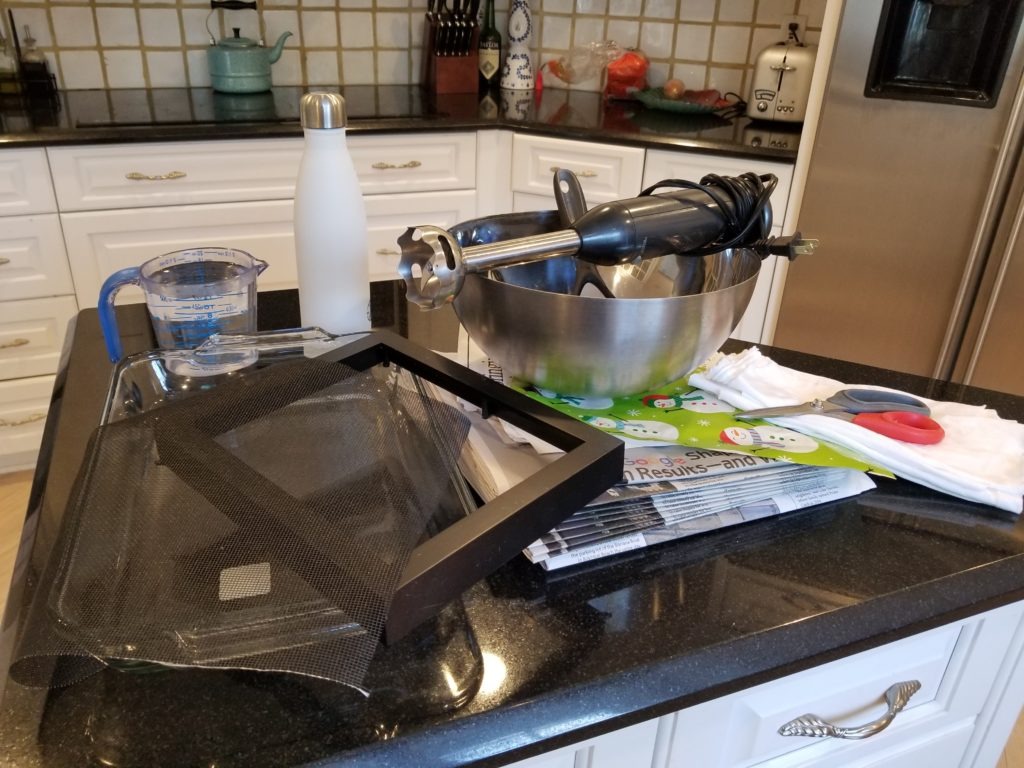
- Unwanted pre- and post-consumer paper (e.g. newspapers, receipts, colored paper, wrapping paper, etc.) Avoid using thick construction paper or thick, shiny magazine paper.
- 10 newspapers to use for blotting paper
- 5 unwanted cloths or towels to use as blotting paper (cut up t-shirts work great)
- 1-inch thick picture frame or shadow box
- Mesh screen (from craft store or hardware store)
- Large mixing bowl
- Blender or mixer
- Scissors
- Rolling pin, glass jar or metal water bottle to use as a roller
- 2 cups of hot water
- 9 x 13 x 2.5 inch glass dish or container (must be large enough for the picture frame you use to fit inside of)
Experiment Process:
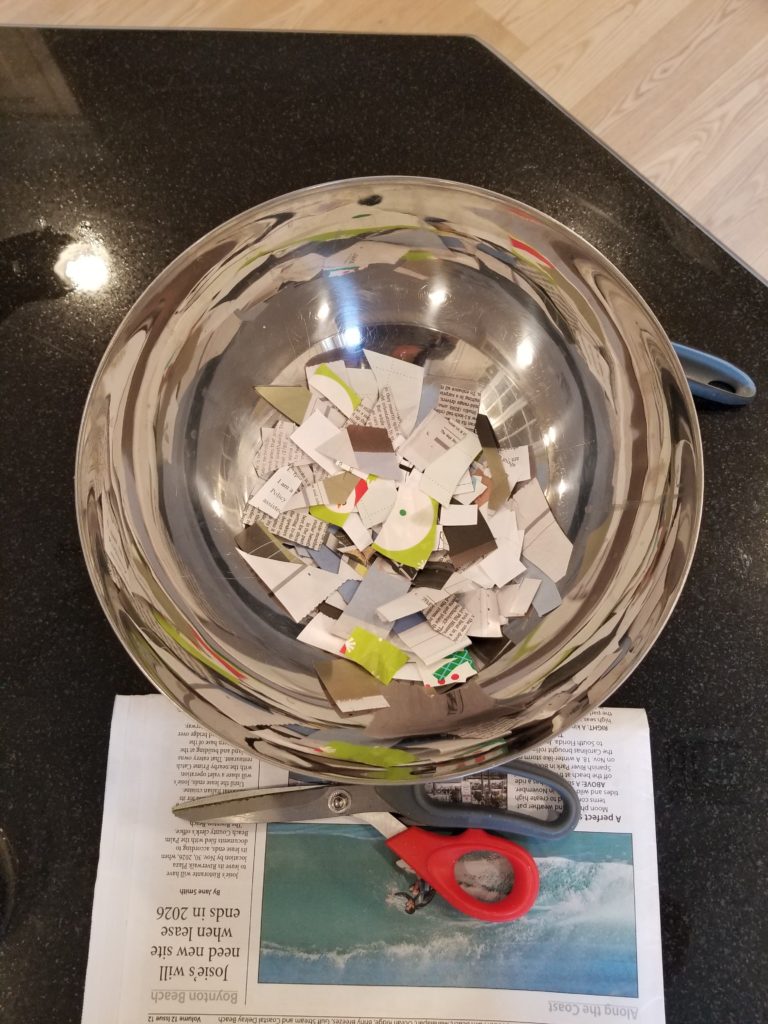
Step 1
Use scissors to cut paper into small pieces and place in mixing bowl.
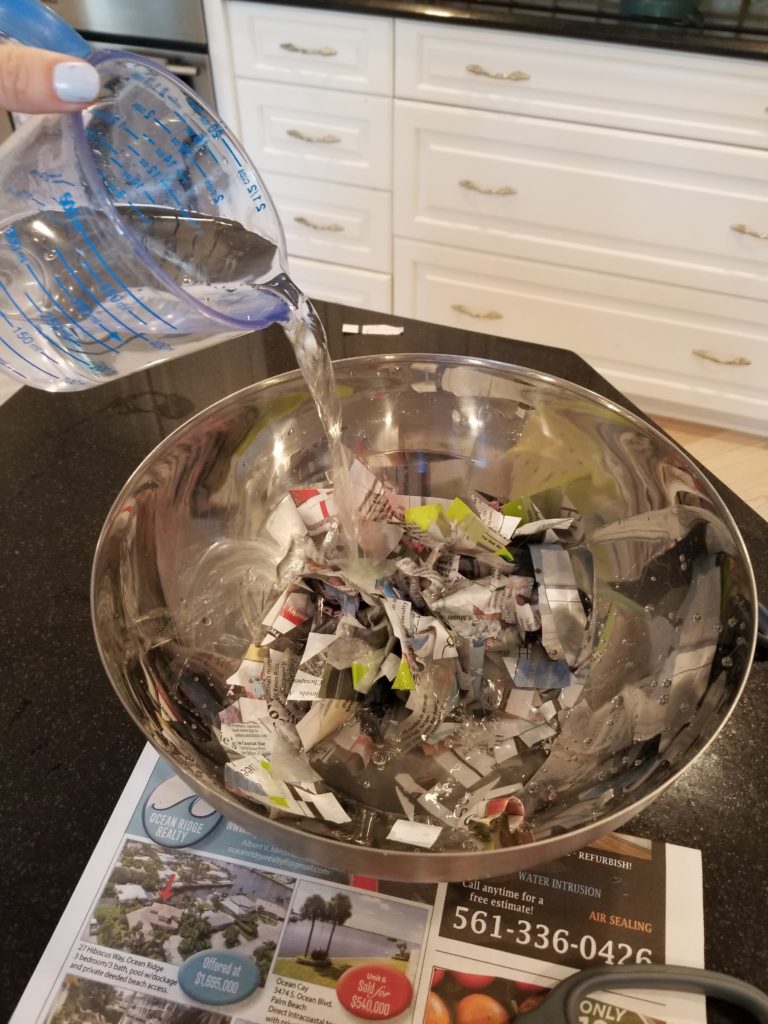
Step 2
Add two cups of water to the paper scraps.
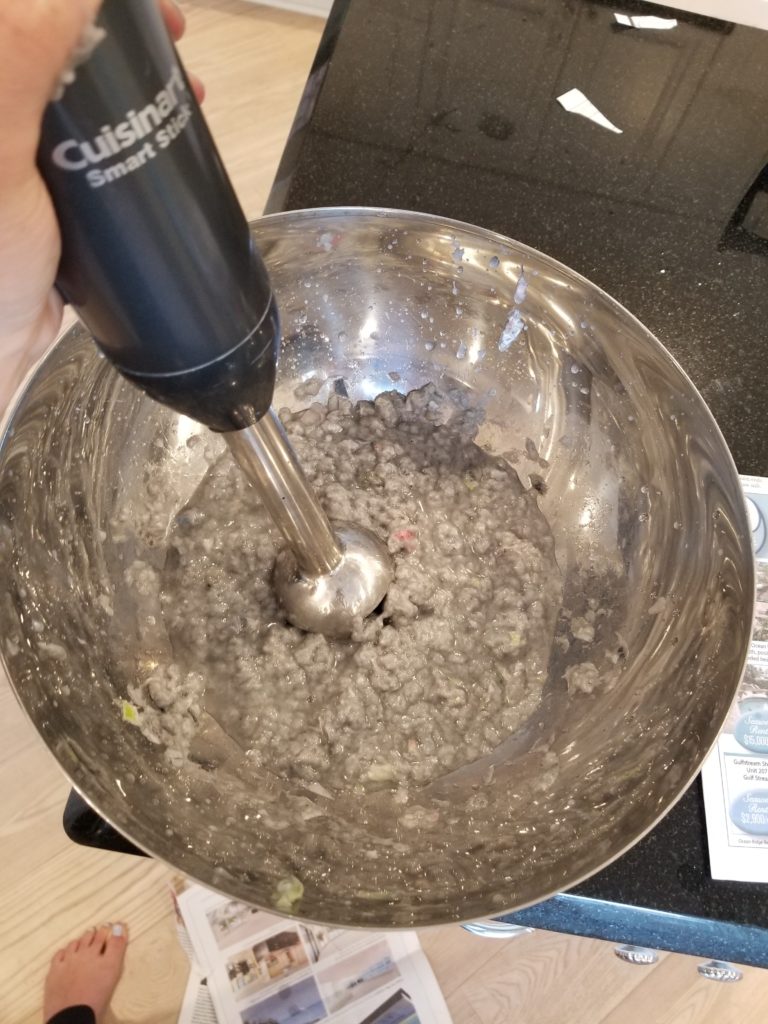
Step 3
As an adult for assistance to use a blender or mixer to mix up the paper and water into a pulp. The pulp is ready when it has the consistency of split pea soup.
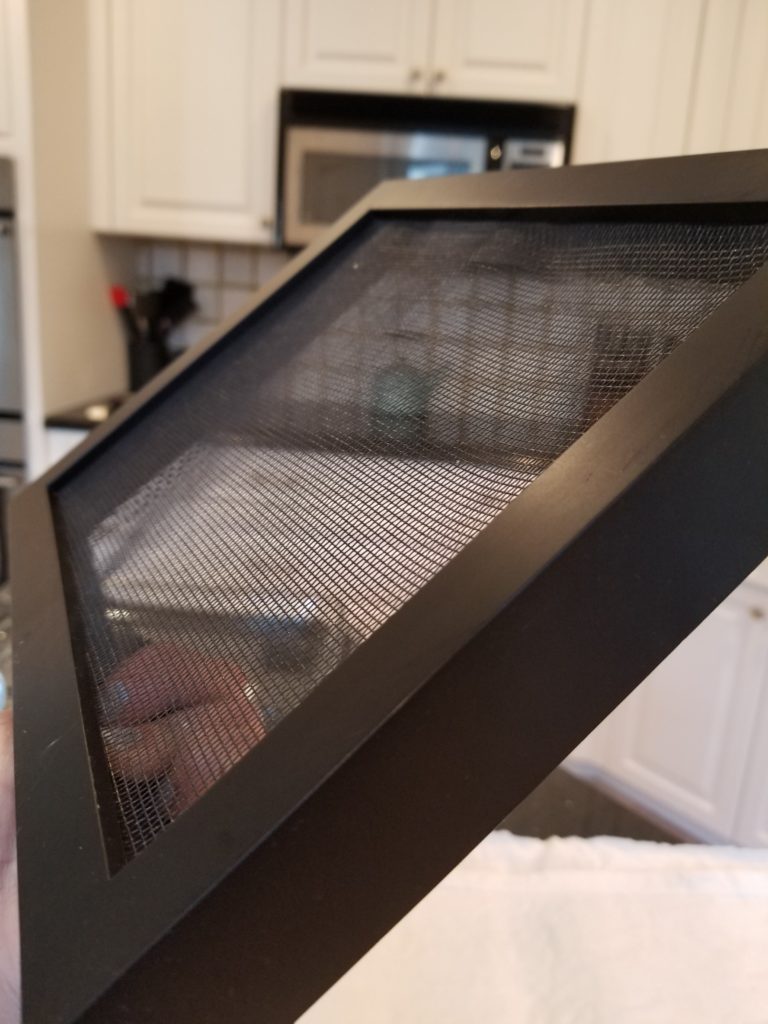
Step 4
Cut the screen so that it fits into your picture frame. Attach the screen to the frame and make sure it is pulled tight so it can support the pulp mixture.
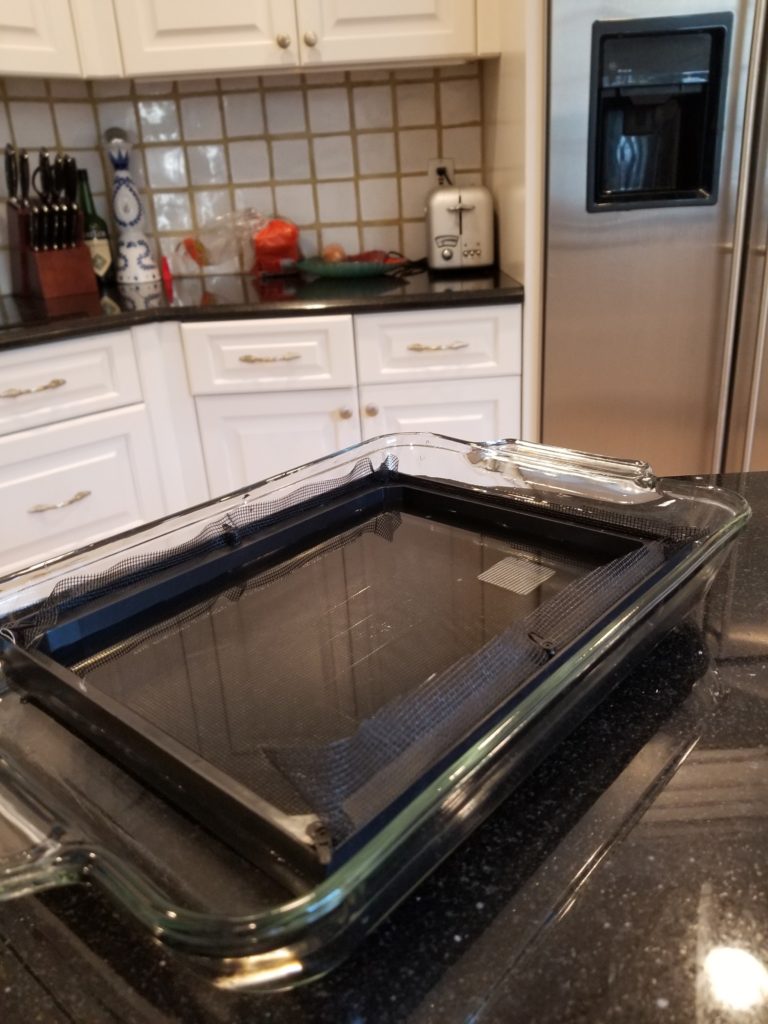
Step 5
Place the screen into the baking dish and add water.
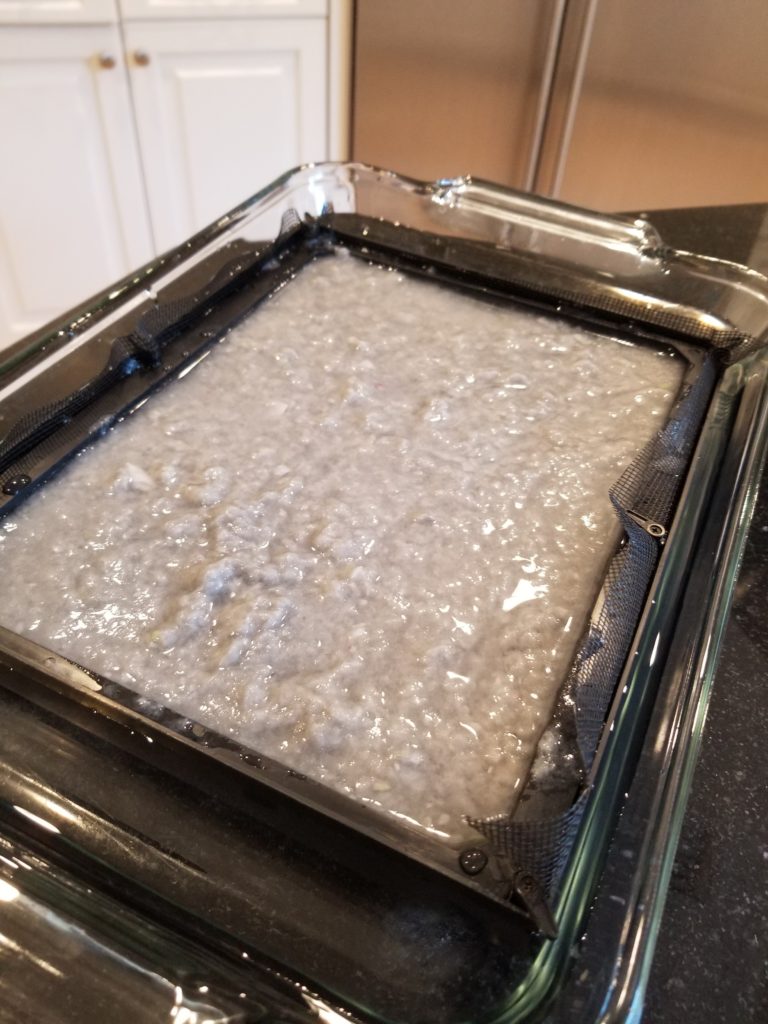
Step 6
Pour some of the pulp mixture onto the mesh screen and spread it out evenly until it covers the entire screen.
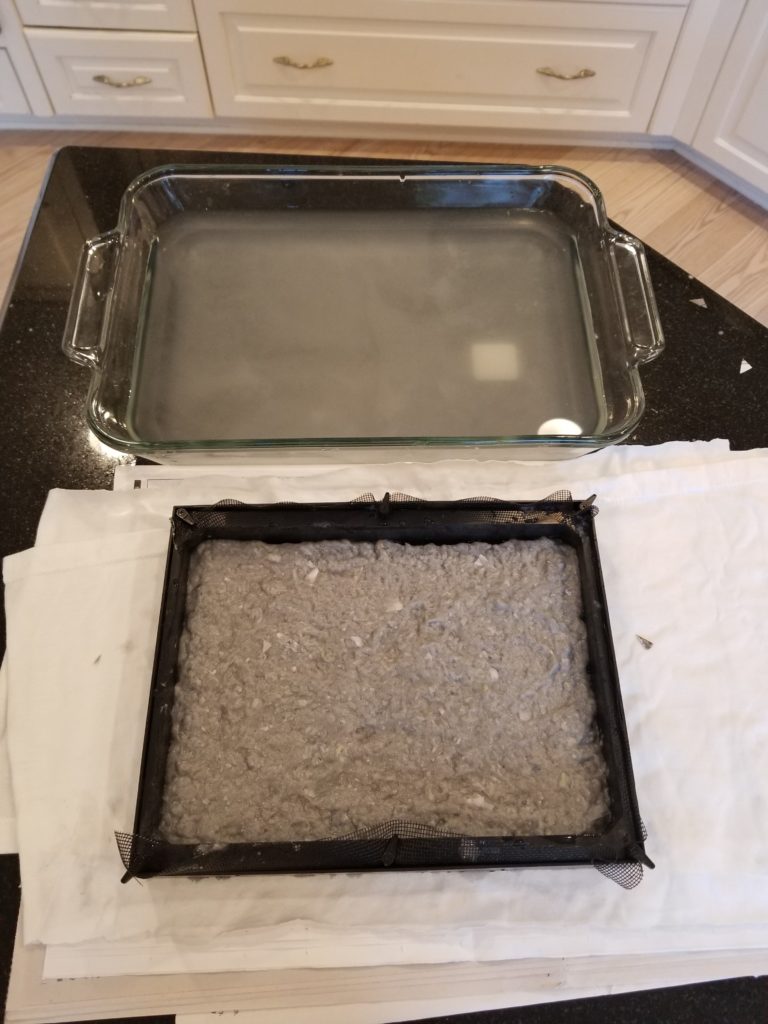
Step 7
Carefully lift the frame from the water and let some of the water from the pulp drip out. Transfer the screen and pulp onto some blotting paper (newspaper).
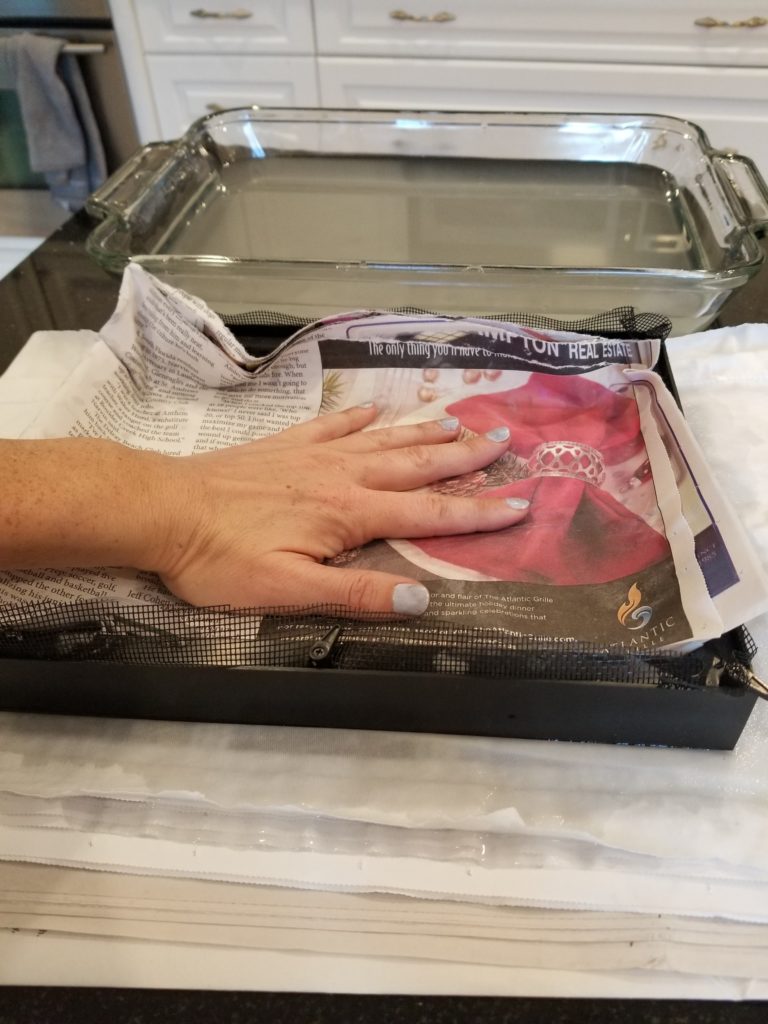
Step 8
Firmly press the pulp with blotting paper repeatedly until it is no longer soaking wet.
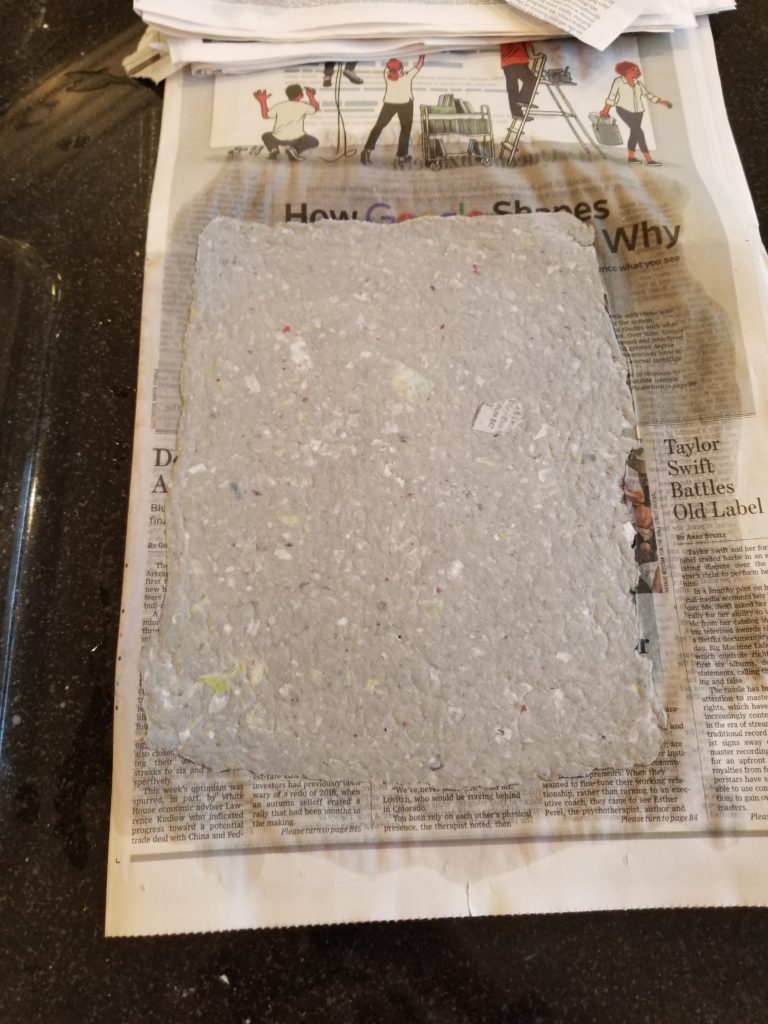
Step 9
Flip the frame so the recycled paper comes off of the screen and lays flat on a sheet of blotting paper.
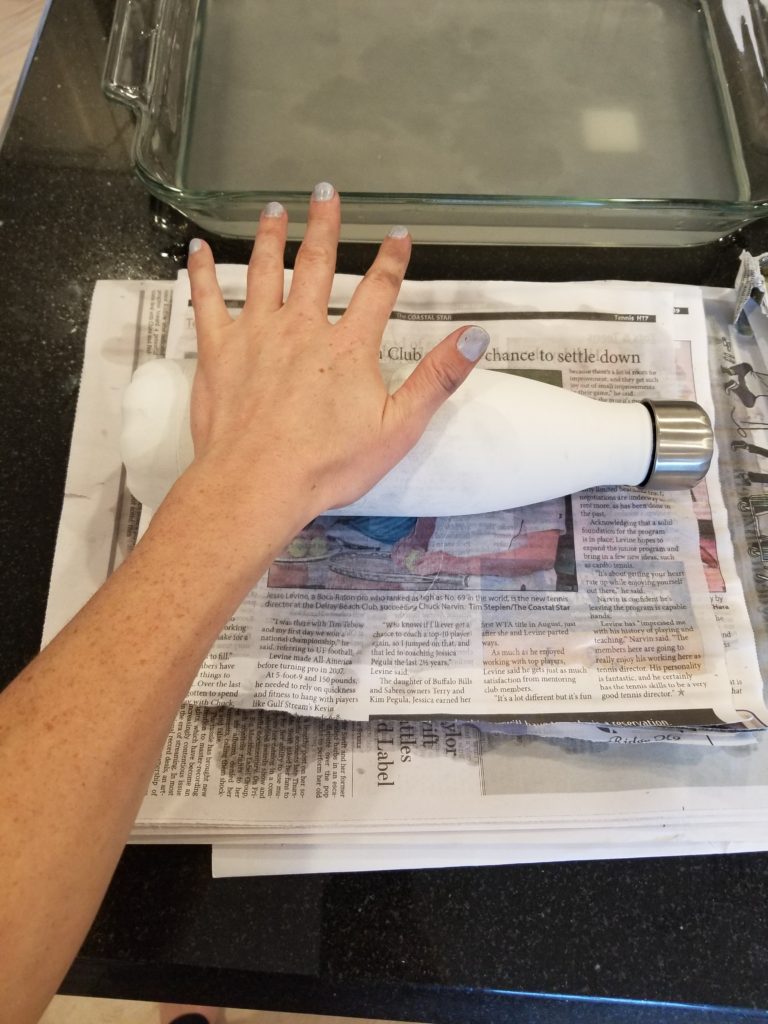
Step 10
Press the recycled paper between sheets of blotting paper and use a roller to press out more water, flatten and smooth the paper.
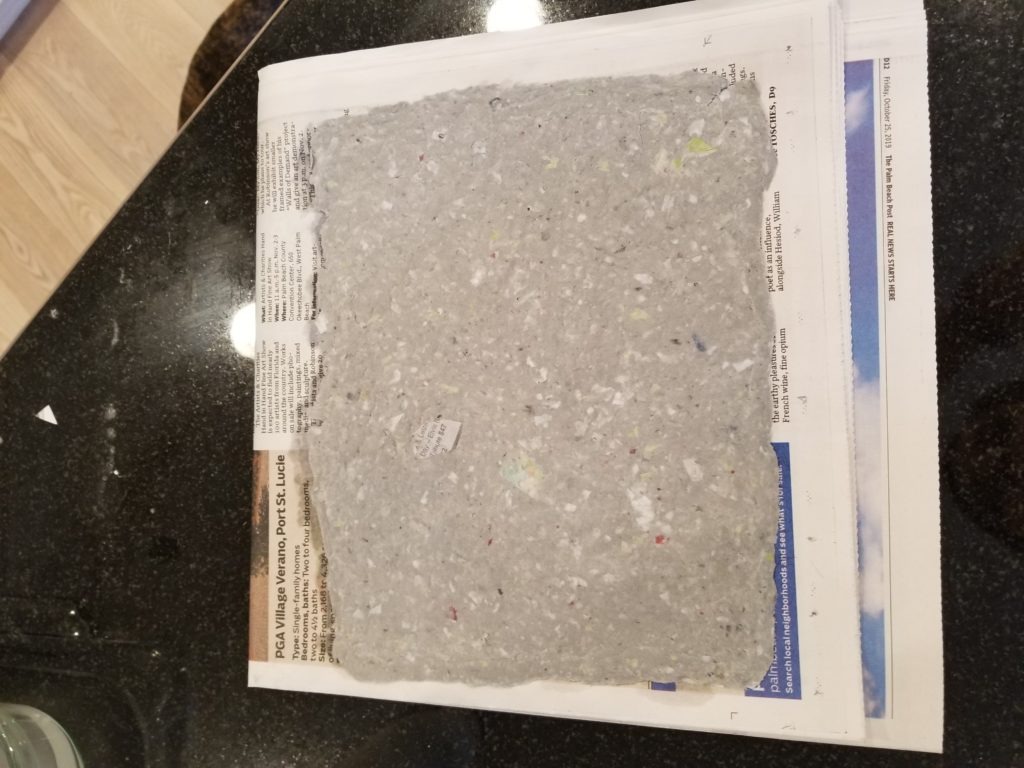
Step 11
When you are finished blotting and rolling the paper, leave it to dry for 24 hours.
Conclusions:
Recycling paper saves energy and water, reduces greenhouse gases and conserves natural resources. The paper industry is one of the largest user of energy in the United States and making recycled paper is estimated to use 60 to 70 percent less energy than making paper from virgin wood pulp. Now that you know how to make your own recycled paper, you can make paper for all kinds of uses! For example, you can make your own holiday cards, birthday party invitations, and even make your own scrap paper for homework assignments! By doing this, not only are you saving energy and reducing greenhouse gases, but you are also saving money by not purchasing a new product from the store!
Extension:
Want to start making your own recycled paper? Keep a scrap paper bin at home so that the whole family can put their used or unwanted papers into it. Once a month, you can take the scraps and make recycled paper for everyone to use!









